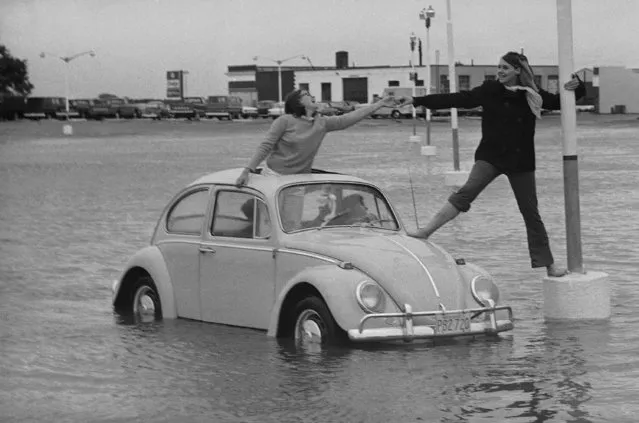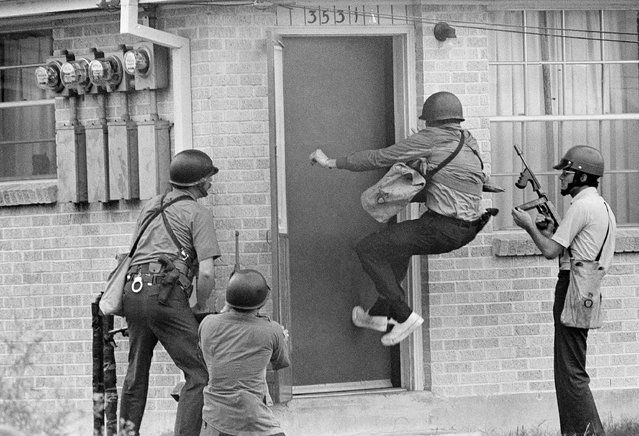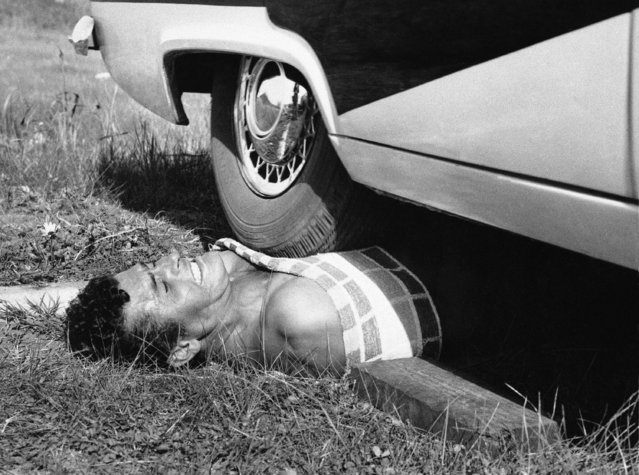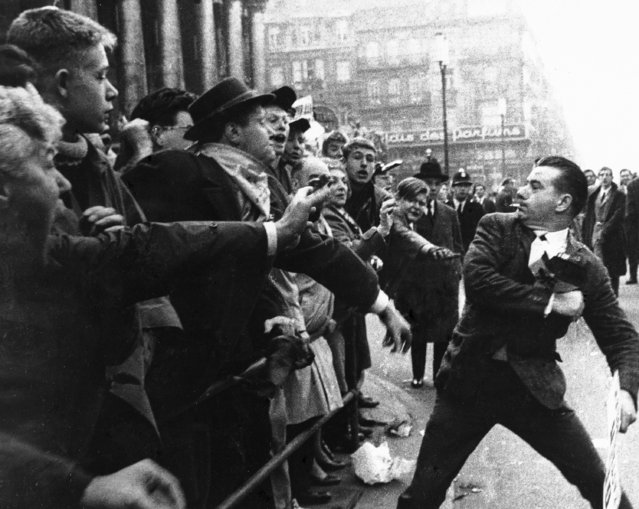
Sally Gomez drives to rescue of friend Michele Moore in flooded parking lot at Hyannis, Mass., September 9, 1969, after torrential rains of Hurricane Gerda flooded low areas of Cape Cod. Ann Davis of Osterville stands up in roof opening to lend a hand. Sally and Michele are from Centerville on the Cape. (Photo by Frank C. Curtin/AP Photo)
10 Sep 2015 13:05:00,post received
0 comments







